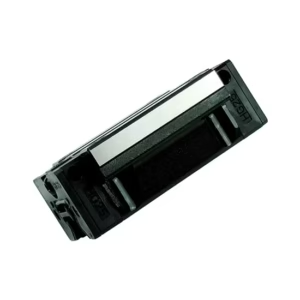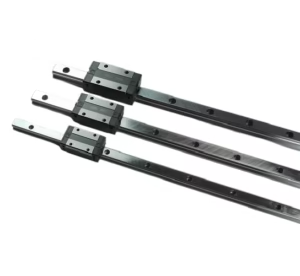Outline for “Linear Slide Rail”
| Section | Sub-Sections |
|---|---|
| Introduction | Importance of precision motion systems |
| Linear Slide Rail | Definition and working principle |
| History and Evolution | Early mechanical guides to modern precision rails |
| Key Components of a Linear Slide Rail | Rails, carriages, rolling elements |
| Types of Linear Slide Rails | Profiled, round, miniature, heavy-duty |
| Ball-Type Linear Slide Rail | High-speed and low-friction design |
| Roller-Type Linear Slide Rail | Heavy-load capacity and rigidity |
| Plain Linear Slide Rail | Durability and low maintenance |
| Materials Used in Linear Slide Rails | Steel, aluminum, ceramics, polymers |
| Advantages of Linear Slide Rail Systems | Accuracy, speed, reliability |
| Industrial Applications | CNC machines, packaging, automation |
| Robotics and Automation Use | Collaborative robots, industrial arms |
| Use in Medical Equipment | Scanners, surgical robotics |
| Role in Aerospace and Defense | Aircraft assembly, simulators |
| Consumer and Everyday Applications | 3D printers, camera sliders, furniture |
| Installation Guidelines for Linear Slide Rails | Alignment, preload, lubrication |
| Maintenance Requirements | Cleaning, lubrication, inspection |
| How to Choose the Right Linear Slide Rail | Factors: load, speed, environment |
| Comparison with Other Linear Motion Systems | Bushings, guides, sliders |
| Innovations in Linear Slide Rail Technology | Smart rails, self-lubrication, IoT integration |
| Cost Considerations | Standard vs. high-precision systems |
| Common Issues and Troubleshooting | Noise, wear, misalignment |
| Best Linear Slide Rail Manufacturers | THK, Hiwin, Bosch Rexroth, SKF |
| Future Trends | Robotics, AI, smart factories |
| FAQs | Expert answers |
| Conclusion | Final insights |
Introduction
Every smooth-moving machine hides a secret component: the linear slide rail. Whether it’s a 3D printer building complex prototypes, a CNC machine cutting intricate shapes, or a surgical robot performing delicate operations, linear slide rails make it possible.
They are designed to ensure precision, smoothness, and stability in linear motion. Without them, industries would face delays, inefficiencies, and costly breakdowns.
This guide explores the world of linear slide rails—from their history to their modern applications—helping you understand why they are so vital to technology and industry.
Linear Slide Rail
A linear slide rail is a mechanical guide that enables motion in a straight line with minimal friction. It consists of a rail and a carriage that moves smoothly along the rail, often with the help of ball or roller bearings.
Think of it as the rails of a train track, ensuring controlled movement in one direction. Without such guidance, machinery would wobble, vibrate, or deviate from its path.
History and Evolution
Early Days: Wooden and metal guides were used in simple tools to provide sliding motion.
Industrial Revolution: Steel rails and basic bearing systems improved machine efficiency.
Modern Era: High-precision rails with rolling elements, advanced materials, and IoT-enabled sensors are now standard.
Key Components of a Linear Slide Rail
Rail: The fixed guide track.
Carriage/Block: The moving part that glides along the rail.
Rolling Elements: Balls or rollers inside the carriage that reduce friction.
End Caps and Seals: Protect the system from dust and contamination.
Types of Linear Slide Rails
Profiled Rails
Provide high rigidity and accuracy, commonly used in CNC machines.
Round Rails
Simple and easy to install, but less rigid. Suitable for lighter applications.
Miniature Rails
Compact rails for small devices like 3D printers and lab equipment.
Heavy-Duty Rails
Engineered for industries requiring large load capacities, like aerospace and automotive.
Ball-Type Linear Slide Rail
These use circulating ball bearings within the carriage. Their biggest strengths include high speed, low friction, and quiet operation. Perfect for applications needing precision and repeatability.
Roller-Type Linear Slide Rail
Roller bearings distribute the load over a larger surface area than balls, making them ideal for heavy-duty and high-rigidity applications.
Plain Linear Slide Rail
Also known as bushing-based systems, these rely on sliding instead of rolling elements. They are durable and suitable for dirty or contaminated environments.
Materials Used in Linear Slide Rails
Steel: High strength and load capacity.
Aluminum: Lightweight and corrosion-resistant.
Ceramics: Heat-resistant and ideal for specialized applications.
Polymers: Cost-effective and suitable for lightweight motion systems.
Advantages of Linear Slide Rail Systems
Smooth, accurate linear motion
High load capacity and rigidity
Reduced wear and long service life
Compatibility with automation systems
Low friction and noise operation
Industrial Applications
CNC machining centers
Injection molding machines
Packaging and labeling machines
Printing and engraving equipment
Robotics and Automation Use
Robotic arms and automation systems rely on linear slide rails for precise, repeatable movements, ensuring safety and efficiency.
Use in Medical Equipment
Medical devices such as MRI scanners, surgical robots, and lab equipment require smooth, reliable motion. Linear slide rails ensure accuracy in life-saving technology.
Role in Aerospace and Defense
From aircraft assembly to training simulators, aerospace industries use slide rails for precision and stability.
Consumer and Everyday Applications
3D printers
Camera sliders
Sliding drawers and furniture mechanisms
Installation Guidelines for Linear Slide Rails
Ensure precise alignment to avoid binding.
Apply correct preload to balance load.
Use proper lubrication for smooth operation.
Secure mounting bolts to prevent vibrations.
Maintenance Requirements
Regular lubrication to minimize wear.
Cleaning rails from dust and debris.
Periodic inspection for cracks or misalignment.
Replacement of worn-out bearings.
How to Choose the Right Linear Slide Rail
Consider:
Load requirements
Speed of operation
Environment (dust, humidity, temperature)
Precision needs
Comparison with Other Linear Motion Systems
Bushings: Cheaper but less precise.
Guides: Offer flexibility but lower load capacity.
Slide Rails: Balance precision, load, and durability.
Innovations in Linear Slide Rail Technology
IoT-enabled smart rails for predictive maintenance
Self-lubricating coatings
Noise-reduction designs
Lightweight composite materials
Cost Considerations
High-precision rails may cost more upfront but save money in reduced downtime and maintenance. Budget rails are fine for light-duty tasks.
Common Issues and Troubleshooting
Noise: Caused by poor lubrication or dirt.
Vibration: Due to misalignment.
Uneven Wear: Often from incorrect preload.
Best Linear Slide Rail Manufacturers
THK – Pioneers in linear motion systems
Hiwin – Known for precision and affordability
Bosch Rexroth – Heavy-duty and industrial-grade solutions
SKF – Reliable, global brand for bearings and rails
Future Trends
The future of linear slide rails lies in automation, AI, and IoT integration. Smart rails that can self-monitor and signal maintenance needs are already reshaping industries.
FAQs
What is a linear slide rail used for?
It guides machinery and equipment in precise straight-line motion with minimal friction.
How long do linear slide rails last?
With proper maintenance, they can last many years, depending on load and speed.
Do linear slide rails need lubrication?
Yes, lubrication is essential for smooth and long-lasting performance.
Can linear slide rails be customized?
Yes, manufacturers offer custom lengths and designs for specialized applications.
Which industries use them most?
Manufacturing, medical, aerospace, robotics, and consumer electronics.
Are linear slide rails expensive?
Costs vary—standard models are affordable, while high-precision industrial systems are more costly.
Conclusion
The linear slide rail may seem like a simple component, but its impact on modern industries is huge. From medical robots to CNC machines, it delivers smooth, precise, and reliable linear motion that keeps the world running. Choosing the right system, maintaining it properly, and understanding its benefits can transform efficiency and performance in any sector.
Inbound Link Suggestions
Link to: Guide to CNC Machines
Link to: Robotics in Industry
Link to: How Bearings Work




